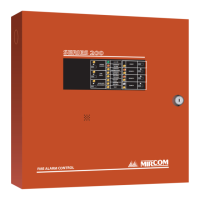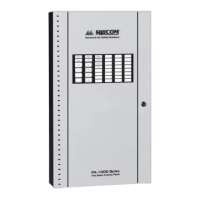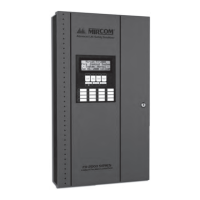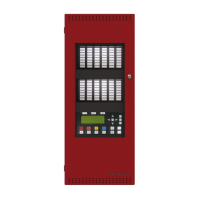47
Indicators, Controls and Operations
9.4.9 Trouble-Only
The Trouble-Only circuit monitors a Trouble condition from an external device such as QX-
5000 Audio System. An activation of a Trouble-Only circuit causes the TRBL LED to flash at
the Trouble rate. Both open and short circuits generate a non-latching Trouble condition.
9.4.10 Indicating (Signal) Circuit Types
9.4.11 Silenceable Signal
The silenceable signal circuit is used for audible devices such as bells and piezo mini-horns
that may be silenced either manually or automatically. While sounding, these devices follow
the pattern appropriate for the condition: the configured Evacuation Code (the default is
Temporal Code) during alarm (see "9.5 Evacuation Codes" below).
9.4.12 Non-Silenceable Signal
The Non-Silenceable Signal circuit is used for audible devices such as bells and piezo mini-
horns that may not be silenced either manually or automatically. While sounding, these
devices follow the pattern appropriate for the condition: the configured Evacuation Code (the
default is Temporal Code) during alarm (see "9.5 Evacuation Codes" below).
9.4.13 Silenceable Strobe
Silenceable Strobes are silenced when the SIGNAL SILENCE button is pressed. For
synchronous strobes see "10.0 Supported Protocols and Devices" on page 50. (Note: Strobes
do not support any code pattern.)
9.4.14 Non-Silenceable Strobes
Non-Silenceable Strobes are not silenced when the SIGNAL SILENCE button is pressed. For
synchronous strobes see section "10.0 Supported Protocols and Devices" on page 50. (Note:
Strobes do not support any code pattern.)

